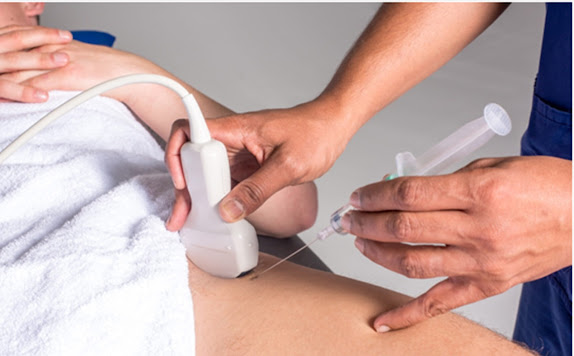Exploring the Benefits and Risks of Joint Steroid Injections: A Comprehensive Guide
Joint steroid injections are commonly used to alleviate joint pain and inflammation, especially for those with arthritis. The treatment involves injecting a corticosteroid medication directly into the affected joint to reduce swelling and discomfort. This comprehensive guide will explore the benefits and risks of joint steroid injections, including their effectiveness, potential side effects, and cost.
Benefits of Joint Steroid Injections
Steroid injections for joint pain have several benefits. Firstly, they can provide significant relief from joint pain, stiffness, and swelling, improving a patient's quality of life. Joint Steroid Injections are often combined with other treatments, such as physical therapy and medications, to enhance their effectiveness.
Another benefit of joint steroid injections is their quick onset of action. Patients typically experience relief from pain and inflammation within a few days of the injection. In addition, joint steroid injections are minimally invasive and do not require anesthesia or a hospital stay, making them a convenient treatment option for patients.
Joint Steroid Injections in the Knee
The knee is one of the most commonly injected joints with steroids. Cortisone injection in the knee can effectively reduce pain and inflammation associated with knee arthritis, bursitis, and other conditions. Knee steroid injections are typically administered in the doctor's office and take only a few minutes to complete.
While knee steroid injections can provide significant relief, they may not suit all patients. Someone with severe osteoarthritis or other advanced knee conditions may not satisfy with steroid injections. They may require more invasive treatments, such as joint replacement surgery.
Potential Risks and Side Effects
Joint steroid injections carry risks and potential side effects like any medical treatment. The most common side effect is temporary pain and swelling at the injection site, which usually subsides within a few days. Other potential side effects include a temporary increase in blood sugar levels, weight gain, and fluid retention.
Long-term use of joint steroid injections can lead to more severe side effects such as joint damage, weakened bones, and an increased risk of infection. However, these risks are relatively rare and usually only occur with frequent or high-dose steroid injections.
Cortisone Injection Cost
The cost of cortisone injections can vary depending on various factors, including the location of the injection, the type of steroid used, and the patient's insurance coverage. On average, the cost of a single cortisone injection can range from $100 to $500. Multiple injections may sometimes be required to achieve optimal pain relief.
Patients should check with their insurance provider to determine the extent of their coverage for cortisone injections. Some insurance plans may cover the cost of the injections, while others may require the patient to pay a portion out of pocket.
Alternatives to Joint Steroid Injections
While joint steroid injections can be highly effective, they may not suit all patients. Individuals with severe joint damage or those who have not experienced significant pain relief from steroid injections may benefit from alternative treatments such as physical therapy, non-steroidal anti-inflammatory drugs (NSAIDs), or surgery.
Physical therapy can help improve joint mobility, reduce pain, and prevent further joint damage. NSAIDs such as aspirin or ibuprofen can also effectively reduce pain and inflammation associated with common conditions. Surgery may sometimes be necessary to repair or replace a damaged joint.
Conclusion
Joint steroid injections can effectively treat joint pain and inflammation, especially for those with arthritis. While they carry some risks and potential side effects, the benefits of joint steroid injections often outweigh the risks. Patients should discuss their treatment options with their doctor to determine if joint steroid injections suit them.
Find us here: Goo.gl/maps/




Comments
Post a Comment